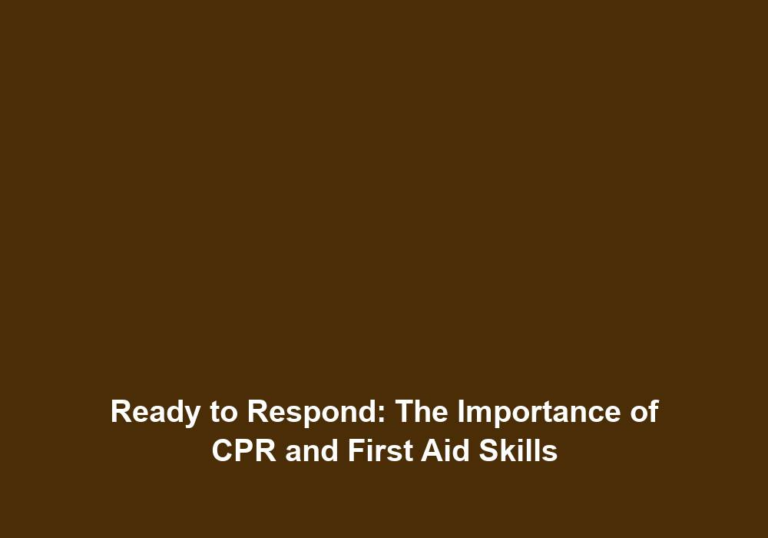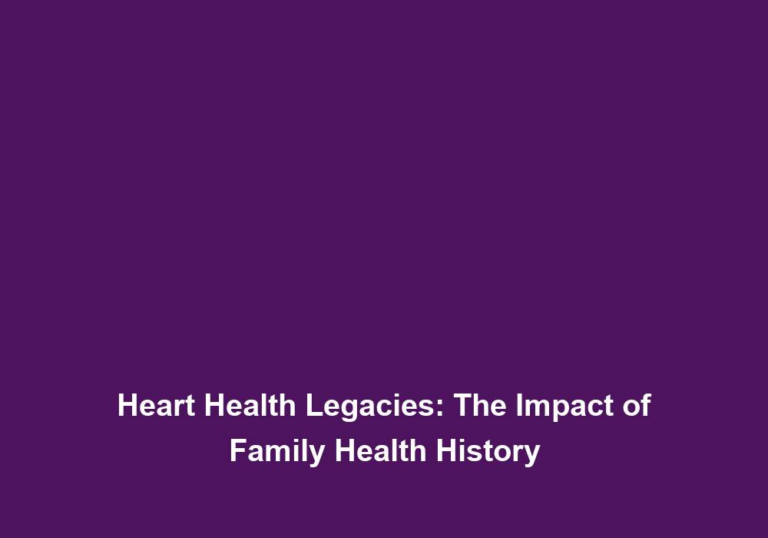Ageless Heart Health: Exercise Tips for Older Adults
As we age, it becomes increasingly important to prioritize our heart health. Regular exercise plays a crucial role in maintaining a healthy heart, regardless of our age. In fact, older adults can benefit greatly from incorporating exercise into their daily routine. Not only does it promote cardiovascular fitness, but it also helps improve overall well-being, enhances mobility, and reduces the risk of chronic diseases. In this article, we will explore effective exercise tips specifically tailored for older adults to ensure ageless heart health.
Importance of Exercise for Older Adults
Engaging in regular physical activity offers a multitude of benefits to older adults. Here are some key reasons why exercise is crucial for maintaining heart health and overall well-being:
-
Enhances cardiovascular fitness: Exercise helps strengthen the heart muscles, improves blood circulation, and increases the efficiency of the cardiovascular system. This, in turn, lowers the risk of heart diseases such as hypertension, heart attack, and stroke. Regular aerobic exercises like brisk walking, cycling, swimming, or dancing can significantly improve cardiovascular fitness in older adults.
-
Improves mood and mental health: Physical activity stimulates the release of endorphins, which are known as feel-good hormones. Regular exercise can help reduce symptoms of depression, anxiety, and stress, promoting a positive mental state. Engaging in activities that you enjoy, such as walking in nature or participating in group classes, can have a positive impact on your overall well-being.
-
Maintains healthy weight: As we age, our metabolism tends to slow down, making it easier to gain weight. Regular exercise helps burn calories, maintain muscle mass, and prevent excess weight gain, reducing the risk of obesity-related conditions such as diabetes and heart disease. Incorporating strength training exercises, like lifting weights or using resistance bands, can help older adults build muscle and boost their metabolism.
-
Increases bone density: Older adults are more susceptible to osteoporosis, a condition characterized by weak and brittle bones. Weight-bearing exercises, such as walking or lifting weights, help improve bone density and reduce the risk of fractures. It’s important to include these exercises in the routine to maintain strong and healthy bones.
-
Enhances mobility and balance: Regular physical activity improves flexibility, strength, and balance, reducing the risk of falls and related injuries. It also helps maintain independence and quality of life. Activities like stretching, yoga, tai chi, or balance exercises can improve mobility and stability in older adults.
Exercise Recommendations for Older Adults
It’s important to consult with a healthcare professional before starting any new exercise regimen. However, here are some general exercise recommendations that can help older adults maintain a healthy heart:
1. Choose aerobic activities
Aerobic exercises are particularly beneficial for cardiovascular health. Aim for at least 150 minutes of moderate-intensity aerobic activity every week, or 75 minutes of vigorous-intensity activity. Some examples of suitable aerobic exercises for older adults include:
- Brisk walking: Walking is a low-impact exercise that can be easily incorporated into daily routines. It provides cardiovascular benefits while being gentle on the joints.
- Cycling: Whether it’s cycling outdoors or using a stationary bike, this activity promotes heart health and strengthens leg muscles.
- Swimming or water aerobics: These activities are gentle on the joints and provide a full-body workout, improving cardiovascular fitness and overall strength.
- Dancing: Dancing not only increases heart rate but also adds fun and creativity to exercise routines, making it an enjoyable way to stay active.
2. Include strength training
Strength training exercises help maintain muscle mass, increase bone density, and improve overall strength and balance. Include strength training activities at least two days a week. Some examples of strength training exercises for older adults include:
- Lifting weights: Start with lighter weights and gradually increase the resistance to build muscle and improve strength.
- Resistance band exercises: These exercises are effective for targeting specific muscle groups and can be done anywhere, making them convenient for older adults.
- Bodyweight exercises such as squats, lunges, and push-ups: These exercises use your own body weight to build strength and improve overall fitness.
3. Prioritize flexibility and balance exercises
Flexibility and balance exercises are important for maintaining mobility and reducing the risk of falls. Incorporate activities that improve flexibility, such as stretching or yoga, into your routine. Additionally, consider practicing balance exercises like tai chi or standing on one leg to enhance stability. These exercises can help older adults maintain their independence and prevent injuries.
4. Start slowly and progress gradually
If you’re new to exercise, start slowly and gradually increase the intensity and duration of your workouts. Listen to your body and do not push yourself too hard, especially if you have any underlying health conditions. It’s important to maintain a comfortable pace that suits your fitness level. Remember, consistency is key, and progress will come with time and dedication.
5. Stay hydrated and warm up properly
Proper hydration is essential during exercise, as it helps regulate body temperature and ensures optimal cardiovascular function. Drink water before, during, and after your workouts, particularly in hot and humid conditions. Additionally, always warm up before exercise to prepare your muscles and joints for physical activity. A warm-up can include light stretching, marching in place, or gentle movements related to the exercise you’ll be performing.
6. Listen to your body and rest when needed
While exercise is important, it’s equally crucial to listen to your body and rest when needed. If you experience pain, dizziness, or shortness of breath during exercise, stop immediately and consult a healthcare professional. Adequate rest and recovery are essential for preventing injuries and maintaining optimal heart health. It’s important to find the right balance between challenging yourself and allowing your body the time it needs to repair and rejuvenate.
7. Consider low-impact options
If you have joint problems or other health concerns, consider low-impact exercises that are gentle on your joints. These include activities like swimming, water aerobics, or using an elliptical machine. Remember, the goal is to stay active and keep your heart healthy, so choose activities that suit your individual needs and abilities. It’s always better to modify exercises to accommodate any limitations you may have rather than avoiding physical activity altogether.
Conclusion
Age should never hinder our pursuit of a healthy heart. By incorporating regular exercise into our daily routine, older adults can significantly improve cardiovascular fitness, overall well-being, and reduce the risk of chronic diseases. Remember to consult with a healthcare professional before starting any new exercise regimen, and always listen to your body. Stay committed, stay active, and enjoy the numerous benefits of ageless heart health!







